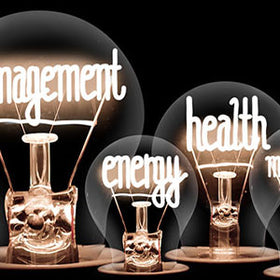
What is Deep Tissue Massage?
Deep tissue massage is executed through the use of firm pressure and slow strokes that are meant to reach deeper into the muscle and fascia, the connective tissue surrounding your muscles.
The main purpose of deep tissue massage is to ease chronic aches and pain such as a stiff neck or upper back, lower back pain, leg muscle tightness, and sore shoulders.
Potential Benefits
Deep tissue massage normally concentrates on a particular problem, such as chronic muscle pain, injury recovery, and is also used for these conditions:
- Low back pain
- Restricted mobility
- Recovery from injuries
- Repetitive strain injury, like carpal tunnel syndrome
- Postural issues
- Muscle tension in the various parts of the legs
- Osteoarthritis pain
- Sciatica
- Piriformis syndrome
- Tennis elbow
- Fibromyalgia
- Upper back or neck pain
What to Expect
In a way, deep tissue massage can feel like a more intense version of a Swedish massage. However, there are specific techniques used during this type of massage.
Deep tissue massage techniques use more pinpoint movement to break up scar tissue and break down muscle "knots" or adhesions, which are bands of painful, rigid tissue. These issues can disrupt circulation and cause discomfort, restricted range of motion, and swelling.
These specific techniques include:
- Stripping- Deep, gliding pressure performed along the length of the muscle fibers usually using a semi-pointed tool like a roller edge or knuckle
- Friction- Pressure applied perpendicular to the muscle grain to loosen adhesions and realign tissue fibers
During deep tissue massage, therapists can use their fingertips, knuckles, hands, elbows, and forearms and when receiving a deep tissue massage from a chair, the rollers will protrude out further, which will decrease the amount of padding around them and make them feel more pinpoint.
This type of massage can cause some stiffness or soreness afterword, but it should go away within a day or so. As with any massage, drinking water following the experience is important. This goes double when receiving a deep tissue treatment.
Do Deep Tissue Massages Hurt?
At certain times during the massage, some discomfort or even pain may occur, especially in spots that contain adhesions or scar tissue. This pain should never be intense. In fact, if you tense up too much as a result of discomfort, it can render the benefits of massage inert.
If you experience this too much, you shouldn’t back off. Warming up for this type of massage is important and you never want to push yourself too hard.
Side Effects and Precautions to Keep in Mind
Deep tissue massage may not be safe for people with blood clots because they could dislodge. If you have blood clots or are at risk of forming blood clots, talk to your doctor first before you attempt this type of massage treatment.
If you've had recent surgery, chemotherapy, radiation, or have another medical condition, you’ll want to do the same.
Massage should not be done directly over bruises, inflamed or infected skin, rashes, unhealed or open wounds, tumors, hernia, fragile bones, or areas of recent fractures. You’ll also want to be careful if you’re pregnant. Just talk to your doctor. That’s the best bet.
Deep Tissue Massage in Massage Chairs
When you are in good health and want a deep tissue massage, there are chairs that can provide this feature. You’ll want to look at 3D and 4D chairs where the massage rollers can protrude out from the track a number of inches to reach deep into the muscles.
You can look into the programs and deep tissue ability of each chair on the website, but these 3/4D chairs will be a good place to start. Additionally, in the Massage Chair Buying Guide, we talk about which chairs are good if you want intense. This can help you with your search.
If you have any questions about massage chairs and how they might provide this type of massage, don’t hesitate to reach out. We’re available over the phone or through email at info@massagechairplanet.com.



